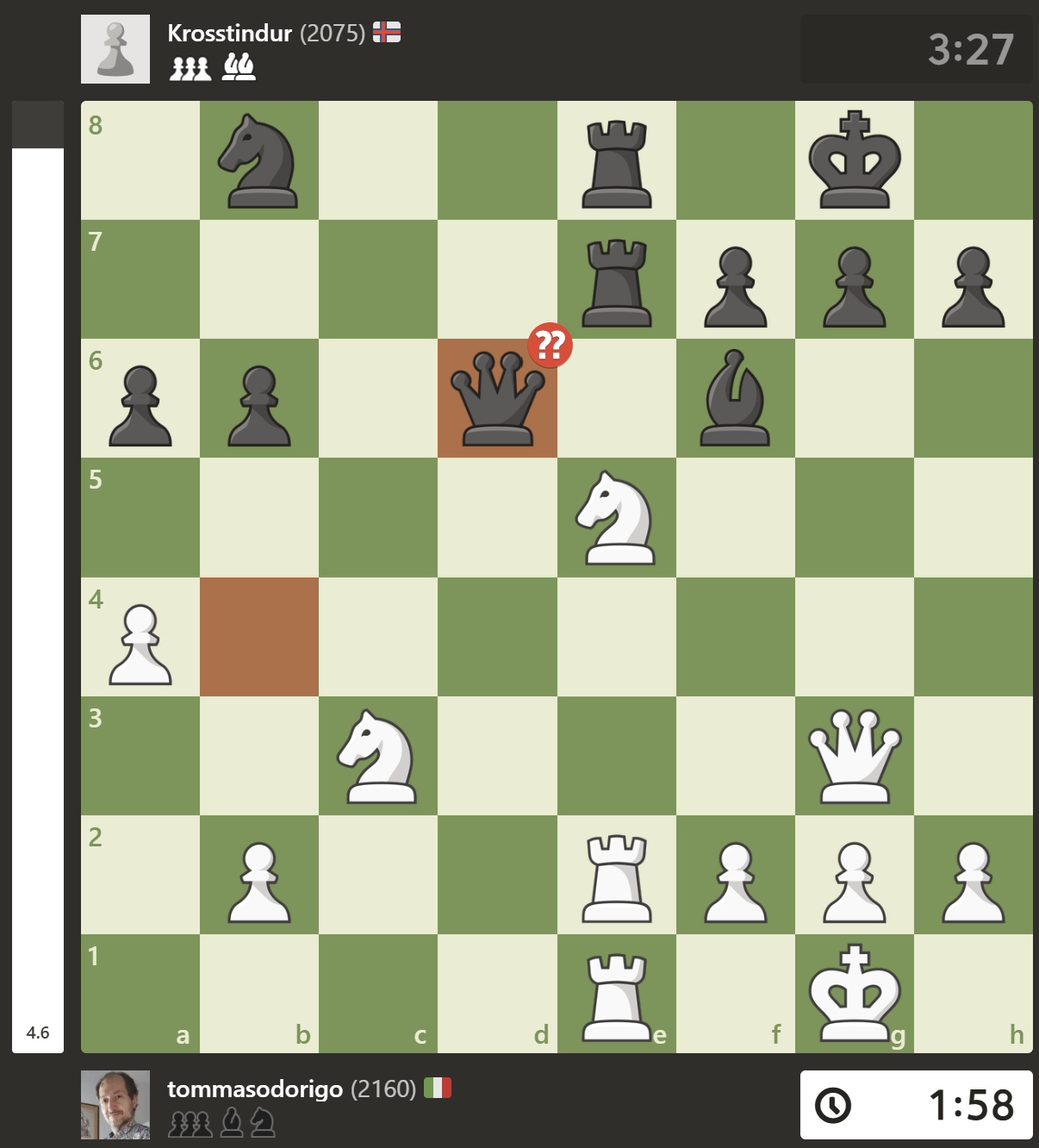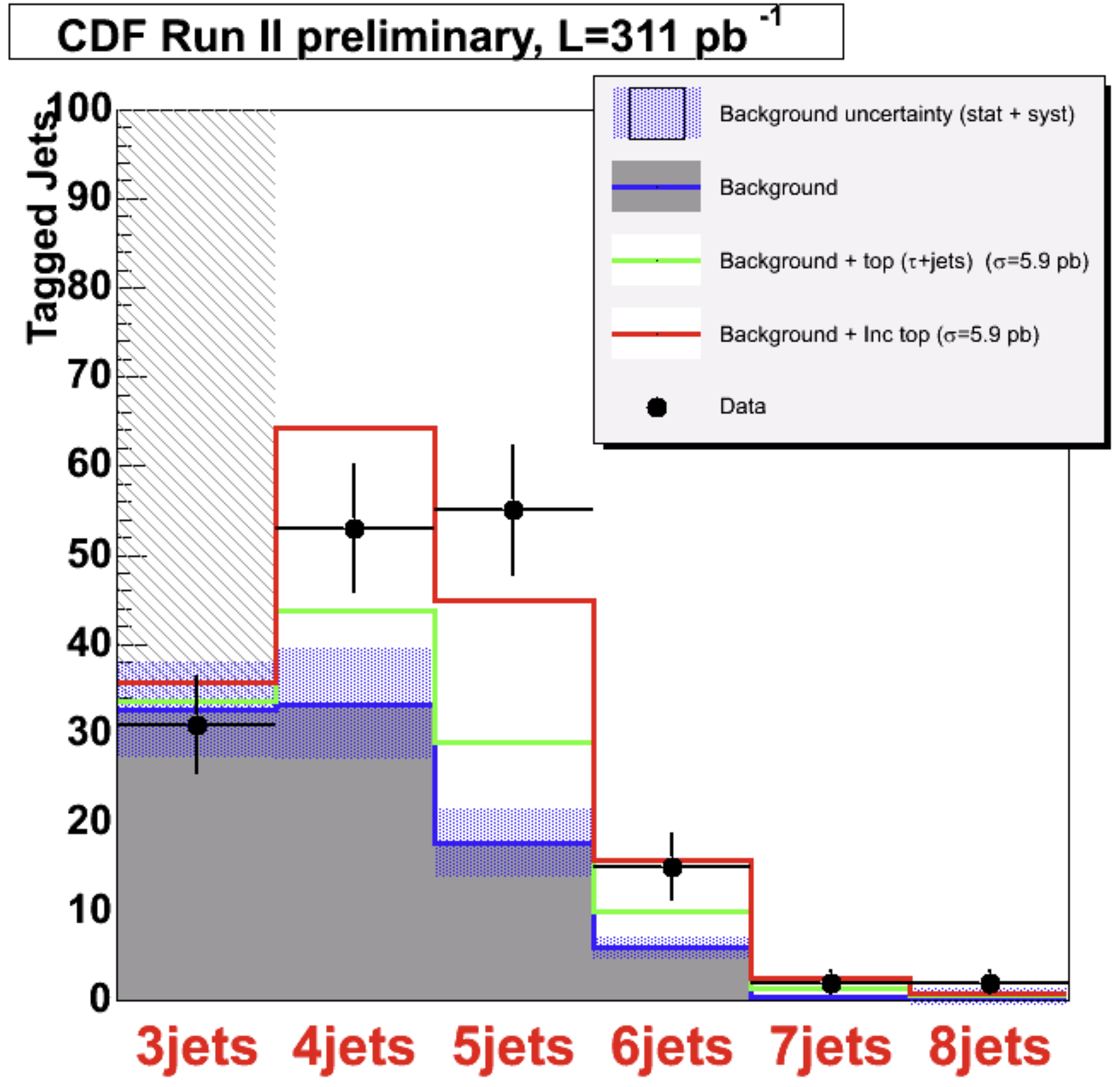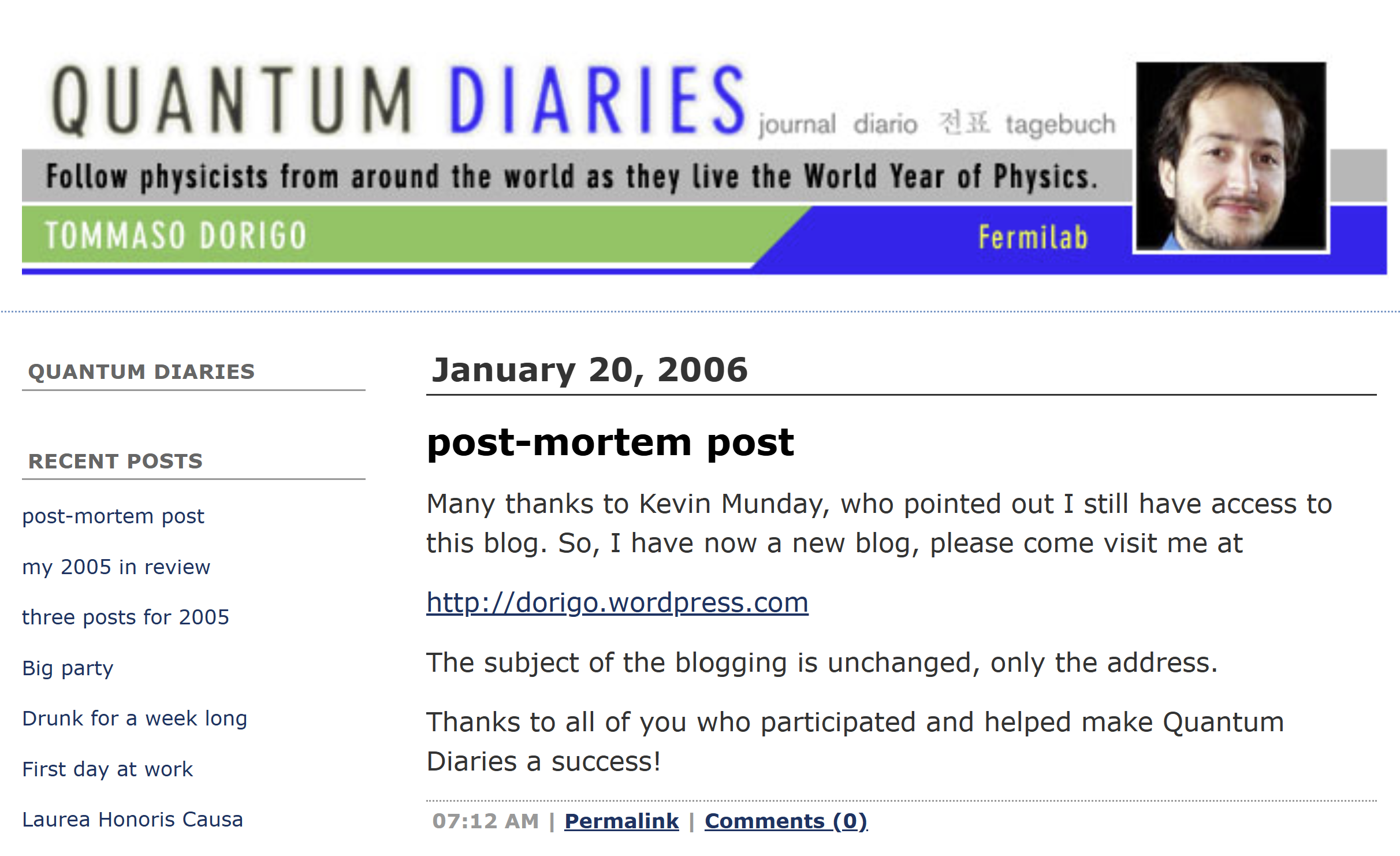This morning I woke up at 6AM, had a shower and breakfast, dressed up, and rushed out in the cold of the fading night to catch a train to Mestre, where my car was parked. From there I drove due north for two hours, to a place in the mountains called Pieve di Cadore. A comfortable ride in normal weather, but this morning the weather was horrible, with an insisting water bombing from above which slowly turned to heavy sleet as I gained altitude. The drive was very unnerving as my car is old and not well equipped for these winter conditions - hydroplaning was frequent. But I made it.
The CMS Collaboration at the LHC collider has recently measured a non-negligible rate for the fraction of Higgs boson decays into muon-tau pairs, as I reported in this article last summer. The observation is not statistically significant enough to cause an earthquake in the world of high-energy physics, and sceptics like myself just raised a gram of eyebrows at the announcement - oh yeah, just another 2-sigma effect. However, the matter becomes more interesting if there is a theoretical model which allows for the observed effect, AND if the model is not entirely crazy.
A comet is a magical sight in the heavens. Comets visible to the naked eye are a uncommon event, and sometimes they put up very suggestive shows in our skies. Those of us who have witnessed the apparition of a bright comet do not forget that experience easily.
The recent landing on comet Churyumov-Gerasimenko of the Rosetta spacecraft has made even more fascinating the observation of comets from the ground, as we got treated by close-ups of the comet surface that resemble mountainous terrains on Earth. Imagining a rock streaming in the sky, coming nearby after a long trip from the Oort cloud, and maybe returning sometimes in the future, or maybe getting lost forever, is truly remarkable.
The terrorist attack of two days ago in Paris to the satirical newspaper Charlie Hebdo left most of us hit hard by the blow to freedom of the press and freedom of thought, which are among that core set of rights on which we have built our society and which we feel we really cannot give up.
I confess I have never unfolded a copy of the Charlie Hebdo newspaper, but I am quite familiar with the work of Wolinski, the 80-year-old cartoonist, who perished in the attack along with his colleagues. I liked his sense of humor and his cartoons a lot, and I am quite pissed off by those two morons taking that away from me.
The following is a guest post by David Orban, CEO at Dotsub, faculty and advisor at Singularity University, and trustee of Network Society Research.
When I implanted an NFC chip in my left hand about two months ago at the Singularity University Summit Europe in Amsterdam, I followed the tradition of our species that a hundred thousand years or more ago decided to become a cyborg.
Apologizing for the silence of last week, due not so much to Christmas holidays but to my working around the clock to write a grant proposal, I wish to show you today a graph which describes very well the complexities of modern day frontier theoretical calculations. That graph is the collection of some of the Feynman diagrams that have to be calculated in order to evaluate a property of the electron called its "anomalous magnetic moment".
 Holiday Chess Riddle
Holiday Chess Riddle Why Measure The Top Quark Production Cross Section?
Why Measure The Top Quark Production Cross Section? The Buried Lottery
The Buried Lottery Twenty Years Blogging
Twenty Years Blogging









